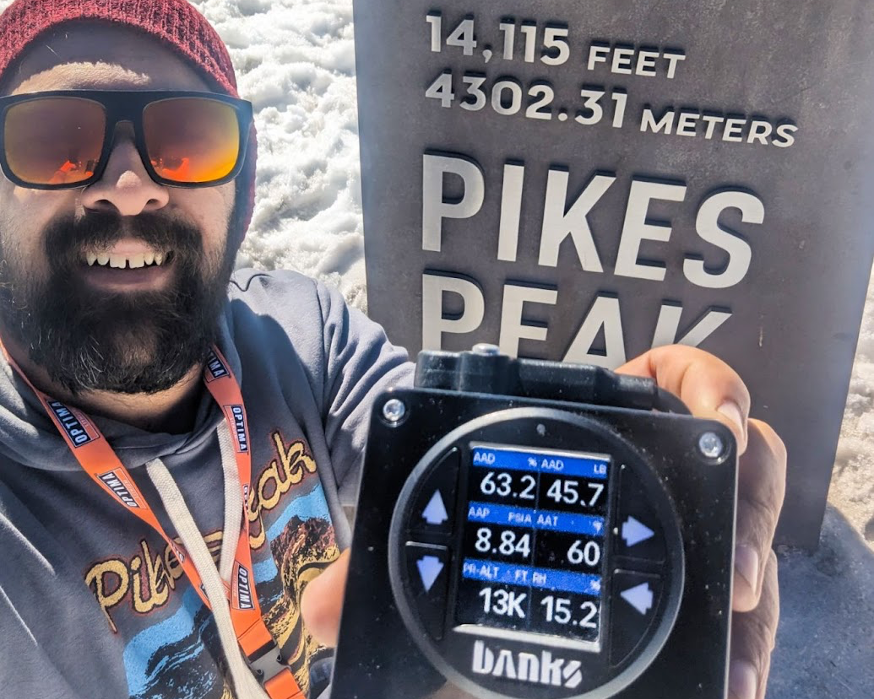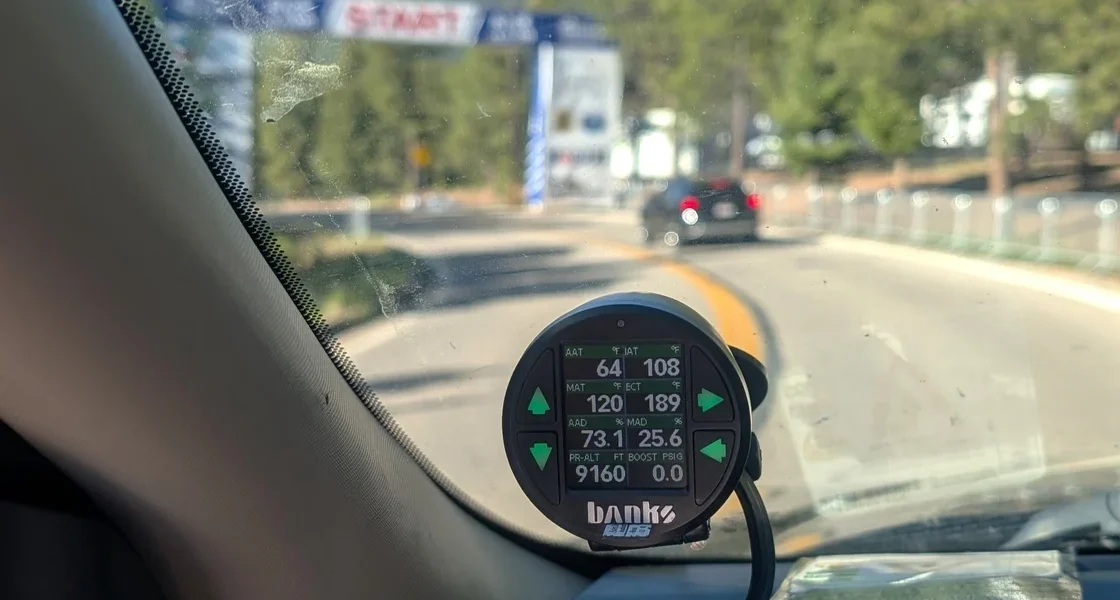iDash Pro: Road, Race & Track Instrumentation for Enthusiasts
“The iDash is my window into how my vehicle is actually performing,” says Joey Rassool matter-of-factly. He’s a video producer for the likes of The Drive and Donut Media, and covers anything from vehicle reviews to grueling racing events like the Bonneville Salt Flats and Pikes Peak. Because of his background in automotive performance, he knows information is the key to getting the most out of a vehicle. “I have an iDash in my 2020 Ford Ranger, and it’s getting a decent amount of information from the sensors that are already on the truck.”

“One of the things that has always interested me was that the iDash could show me pressure altitude, because when you’re off-roading, it’s always kind of nice to know how high up you are. Say that the trail report says that you’re supposed to expect snow at 6,000-7,000 ft, it’s nice to know that you’re actually at that altitude. The pressure altitude is really good for that. Density altitude is better at telling you what’s going on with your engine, but what altitude is it that your engine is reacting like that at? It’s not as accurate to what height you’re at, but pressure altitude the iDash reports is very accurate to where you’re actually at.”

As an information junkie, Joey paid close attention on his drive from California, though New Mexico, all the way to Colorado and to Pikes Peak, ever watching the elevation climb and noting the engine’s performance on his iDash Pro. “At the starting line of the racecourse, which is 9,100 ft, ambient air density was at 73%. By the time I was at the top of the mountain, at 14,115 ft, ambient air density had dropped to 64%. I’ve been there before doing the same thing in naturally-aspirated V6 Toyota Tacoma, and that one really struggled going up there because the air got thinner as density decreased. The performance of the Ranger was much better since its engine is turbocharged.”

The reason for the difference is the performance of the two trucks is because as altitude increases, air pressure and density decrease, which means there’s less oxygen available in the air for combustion. Naturally aspirated engines (those without forced induction) rely on the engine’s ability to draw air in, and with less air available, they lose power. At higher altitudes, turbochargers help maintain engine power by compressing the thinner air, compensating for the reduced density and oxygen availability. This means a turbocharged engine can still deliver strong performance even when a naturally aspirated engine would experience a significant power loss.

Joey also depends on the iDash Pro in his FRS and highly modified Yaris track cars. “I’m monitoring all of my temperatures in the FRS during Autocross, and I have two iDash gauges in my race Yaris. That one is going through an engine swap, and since it’s a different ECU that’ll be running it the iDash might be the only way that I will be able to read anything. As you can tell, the iDash is my go-to instrumentation.”
See iDash combined with PedalMonster and other Banks upgrades

